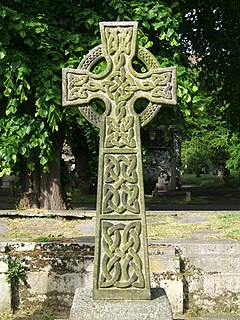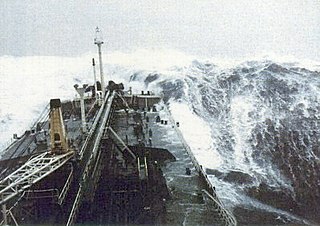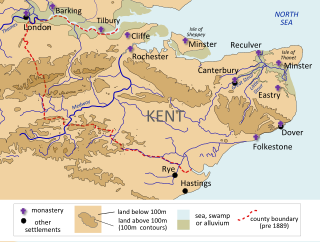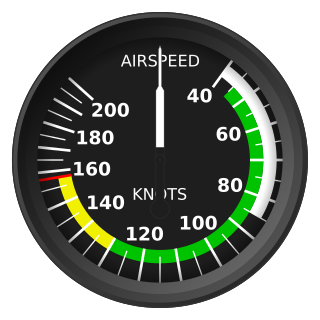
The Harrington knot is a decorative heraldic knot, [1] the badge of the Harrington family. [2] It is in essence identical to the fret.

The Harrington knot is a decorative heraldic knot, [1] the badge of the Harrington family. [2] It is in essence identical to the fret.

Celtic knots are a variety of knots and stylized graphical representations of knots used for decoration, used extensively in the Celtic style of Insular art. These knots are most known for their adaptation for use in the ornamentation of Christian monuments and manuscripts, such as the 8th-century St. Teilo Gospels, the Book of Kells and the Lindisfarne Gospels. Most are endless knots, and many are varieties of basket weave knots.

In the mathematical field of topology, knot theory is the study of mathematical knots. While inspired by knots which appear in daily life, such as those in shoelaces and rope, a mathematical knot differs in that the ends are joined so it cannot be undone, the simplest knot being a ring. In mathematical language, a knot is an embedding of a circle in 3-dimensional Euclidean space, . Two mathematical knots are equivalent if one can be transformed into the other via a deformation of upon itself ; these transformations correspond to manipulations of a knotted string that do not involve cutting it or passing through itself.

The Beaufort scale is an empirical measure that relates wind speed to observed conditions at sea or on land. Its full name is the Beaufort wind force scale.

The Kingdom of the Kentish, today referred to as the Kingdom of Kent, was an early medieval kingdom in what is now South East England. It existed from either the fifth or the sixth century AD until it was fully absorbed into the Kingdom of Wessex in the late 9th century and later into Kingdom of England in the early 10th century.

A necktie, or simply a tie, is a piece of cloth worn by men and women for decorative purposes around the neck, resting under the shirt collar and knotted at the throat, and often draped down the chest.

The knot is a unit of speed equal to one nautical mile per hour, exactly 1.852 km/h. The ISO standard symbol for the knot is kn. The same symbol is preferred by the Institute of Electrical and Electronics Engineers (IEEE); kt is also common, especially in aviation, where it is the form recommended by the International Civil Aviation Organization (ICAO). The knot is a non-SI unit. The knot is used in meteorology, and in maritime and air navigation. A vessel travelling at 1 knot along a meridian travels approximately one minute of geographic latitude in one hour.

Bondage is the activity of tying or restraining people using equipment such as chains, cuffs, or collars for mutual erotic pleasure. According to the Kinsey Institute, 12% of females and 22% of males respond erotically to BDSM.
Robert George Harrington was an American astronomer who worked at Palomar Observatory. He should not be confused with Robert Sutton Harrington, who was also an astronomer, but was born later and worked at the US Naval Observatory.
In the mathematical field of knot theory, the HOMFLY polynomial or HOMFLYPT polynomial, sometimes called the generalized Jones polynomial, is a 2-variable knot polynomial, i.e. a knot invariant in the form of a polynomial of variables m and l.

A Harrington jacket is a lightweight, waist-length jacket made of cotton, polyester, wool or suede. Designs often incorporate traditional Fraser tartan or checkerboard-patterned lining.

The Tom fool's knot, also known as the conjurer's knot, bow knot and Greek fool's knot, is a type of knot sometimes considered a handcuff knot, though usually considered somewhat inferior to it. It is a good knot with which to commence a slightly fancy sheepshank. It is also used as a trick knot due to the speed with which it can be made. The knot has a number of mainly decorative but also functional uses, such as sailing, boating, camping and bondage.

Harrington is a railway station on the Cumbrian Coast Line, which runs between Carlisle and Barrow-in-Furness. The station, situated 35 miles (56 km) south-west of Carlisle, serves the villages of Harrington and Salterbeck in Cumbria. It is owned by Network Rail and managed by Northern Trains.

The Democratic Socialist Organizing Committee was a democratic socialist organization in the United States.

The Wake knot or Ormond knot is an English heraldic knot used historically as an heraldic badge by the Wake family, lords of the manor of Bourne in Lincolnshire and also by the Butler family, Earls of Ormond.

The Hungerford or Hastings knot is a heraldic knot used as an heraldic badge in English heraldry by the Hungerford and Hastings families. The binding together of a Hungerford sickle and a Peverell garb (wheatsheaf) with the Hungerford knot commemorates the marriage between the Hungerfords and the Peverells in the early 15th century.
43P/Wolf–Harrington is a periodic comet discovered on December 22, 1924, by Max Wolf in Heidelberg, Germany. In 2019 it passed within 0.065 AU of Jupiter, which lifted the perihelion point and increased the orbital period to 9 years.
51P/Harrington is a periodic comet in the Solar System.

Edward Michael Harrington Jr. was an American democratic socialist. As a writer, he was perhaps best known as the author of The Other America. Harrington was a political activist, theorist, professor of political science, and a radio commentator. Harrington was a founding member of the Democratic Socialists of America, and its most influential early leader.

The Harrington Arms is in Church Lane, Gawsworth, Cheshire, England, and is recorded in the National Heritage List for England as a designated Grade II listed building.

The Harrington and Lowca Light Railway was a short railway on the coast of Cumberland, which is now part of Cumbria, England.